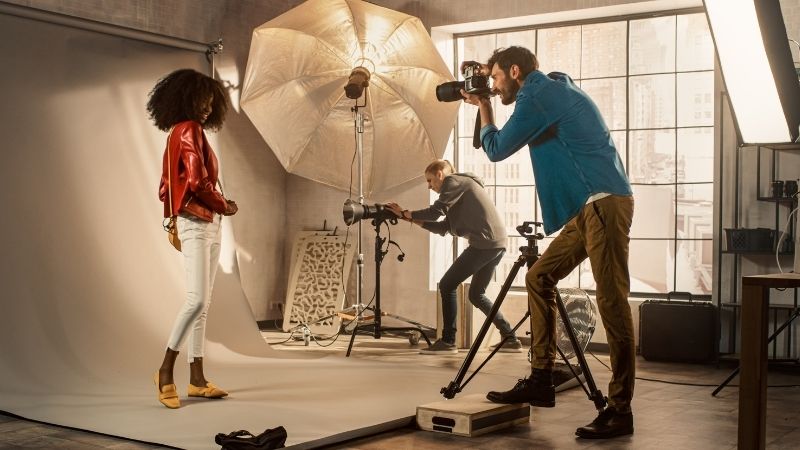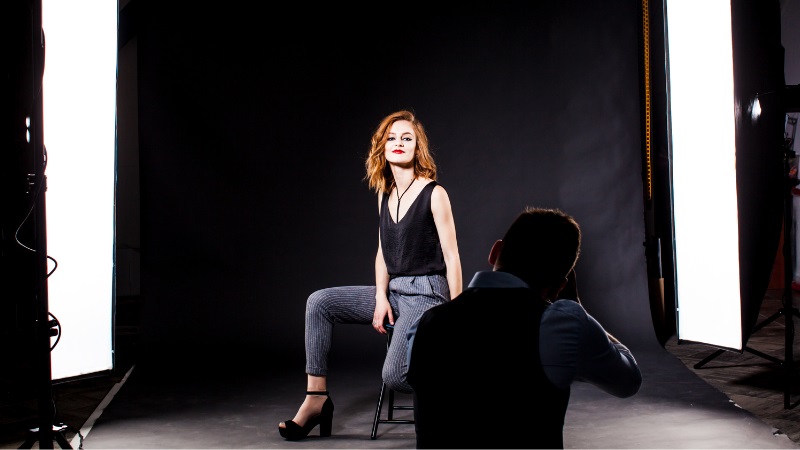
How to Overcome Insecurities and Start Modeling
Learning how to start modeling involves practicing your poses, perfecting your walk, and staying updated on the latest fashion trends. Modeling requires more than just walking down the runway and taking pictures; it is a business that demands dedication and resilience from its participants.
Models are individuals who represent something else – for instance, a volcano or airplane. To be an effective model, one must follow four steps: attention, retention, reproduction, and motivation.
Know Your Niche
Step one in becoming a model is finding your niche. There are so many possibilities in modeling, from curvier California looks to leaner New York looks or waif-like European looks – that finding one may seem overwhelming at first. By taking time to identify this area of focus for you, finding success will become much simpler in the long run.
One effective method for finding your niche is conducting competitive research. By learning what other competitors are offering and why their audience buys from them, this research can help identify your unique selling proposition and define your audience.
Another effective method for finding your niche is to consider what work you enjoy doing and your skillset, enabling you to determine what type of models will come your way and where your success lies. Once your niche is clear, keep it in mind when working on modeling skills or searching for clients – test its viability by creating a website, or social media account or attending local business fairs before investing money on ads!
As soon as you decide to enter a new niche, it is advisable to create a budget and allocate specific time for research and planning. Doing this will ensure that you do not get stuck in an endless research phase that prevents you from taking steps toward making money immediately.
Build a Great Portfolio
As a designer, UX professional, or another type of creative professional, your portfolio is your most precious possession. Curating the best work into an attractive package to show clients and agencies is not always simple but doing it properly will pave the way to building a career.
Modeling differs from other artistic endeavors because its success relies heavily on client feedback. You must produce an impressive portfolio to impress agents and clients, so practicing in front of the camera is vital for making an impression first impression. As modeling is a collaborative effort between yourself, your director/photographer, and clients, it’s also crucial that you give up some creative control if necessary – otherwise, you will soon fall out of this industry altogether!
As you compile your portfolio, remember to include pictures that showcase the types of modeling you wish to specialize in. For instance, fitness modeling should feature full-body shots showing you doing exercises or flaunting your body; fashion and commercial modeling might include editorial images.
As part of your overall business strategy, it’s also crucial to establish a solid online presence. This will allow potential clients to view your portfolio and get in contact directly. Keep your social media updated with all your recent work; additionally consider sharing lifestyle or travel photos that show who you are as an artist.
If you’re having difficulty gathering images for your portfolio, working with local photographers may be the solution. Many are offering TFP (trade for print) sessions with novice models – giving them invaluable advice while increasing their modeling portfolio and getting valuable feedback from experienced photographers.
Developing a strong portfolio is an essential step in learning how to start modeling and showcasing your versatility as a model.
Practice
Modeling is an art, so practice makes perfect. Hire a photographer to take headshots, full body shots, and swimwear photographs for your portfolio. Most modeling agencies prefer natural photos without makeup and simple hair styling – having professional feedback in the early stages of your modeling career is also invaluable.
Working with an experienced photographer requires both strong posing and facial expression skills as well as being open to their vision of how you should look in photographs. Supermodels who grace beautiful magazines didn’t just sit back while they took pictures; instead, they collaborated closely with photographers to produce stunning imagery.
If meeting with an agent, be prepared for questions such as why and what your hobbies are; be able to articulate your answers so they demonstrate passion and drive for this industry.
To succeed in the competitive world of modeling, consistent practice is key when learning how to start, as it helps refine your skills and enhance your overall performance.
Find an Agent
Modeling agents are professional representatives who act on your behalf. They can assist in finding work that complements your aesthetic, negotiate contracts on your behalf and ensure any agreements adhere to industry protocols and employment laws, and provide lists of clients as a resource of what type of work may be most common for their agency (high fashion brands, catalog companies, etc).
Finding a modeling agent is essential. Starting can be hard, particularly at first. Agents provide access to jobs not advertised on casting sites – including runway show producers, photographers who need models for photo shoots, and other industry professionals who may need models for photoshoots.
If you’re ready to begin looking for an agent, take some time and care in crafting a strong portfolio of headshots and full-body shots that showcase your best features. Scouts and casting directors use these images as part of the screening process; make sure they look as natural as possible (no filters!). If unsure how to take these photographs yourself, hire a professional photographer or ask a friend with photography experience for assistance.
Start sending digital submissions to agencies that best match your look and personality, with patience being key as some agencies may take time to respond; don’t be intimidated if it has been several weeks without any responses from an agency. When invited in for an in-person meeting, do a bit more research – brush up on current fashion designers, and popular supermodels, as well as any pertinent details to stand out amongst other candidates in terms of industry knowledge.
When figuring out how to start modeling, it is crucial to find a reputable agent who can guide you through the industry, help secure opportunities, and provide valuable career advice.
Network
Networking is the practice of cultivating relationships within an industry. Networking is integral to your modeling success as it can open up work opportunities that otherwise might have gone unexploited.
Models often find their first jobs through referrals from others in the industry. Because modeling can often be quite selective, people will only put forth their best effort for those they know well – thus you must be kind and friendly towards everyone you encounter in business as this could help land you your next gig!
As part of your networking efforts, it can be advantageous to attend fashion shows and other events with other industry professionals, including photographers, designers, and agency people. Furthermore, these shows give you the chance to show off your modeling abilities and build up your portfolio; bring along a copy of your resume should anyone ask!
If attending networking events alone feels intimidating, consider going with another model. That way you can form teams at different parts of the event and divide and conquer duties as necessary. Also bring along a notebook and pen so that when speaking to people at these events, take notes about them and their contact information so you can follow up afterward.
As it’s unlikely you will make a livable wage as a model right away, having a “survival job” in the meantime is key to your financial well-being. This could involve anything from waiting tables and walking dogs to tutoring; just make sure it allows for flexible attendance at photoshoots and go-sees.
Building a strong professional network is an important aspect of learning how to start modeling, as it opens doors to potential collaborations, casting opportunities, and industry connections that can propel your career forward.




